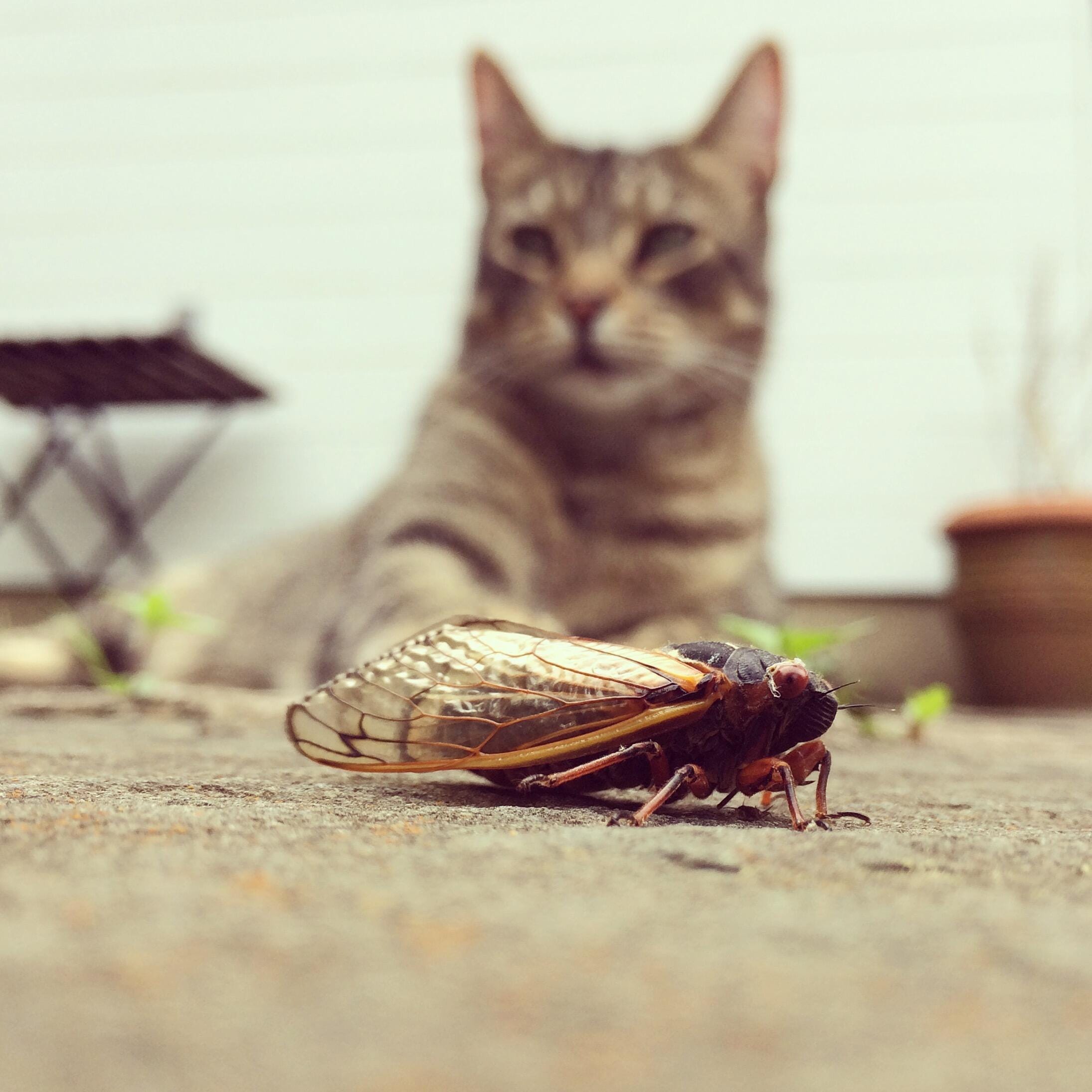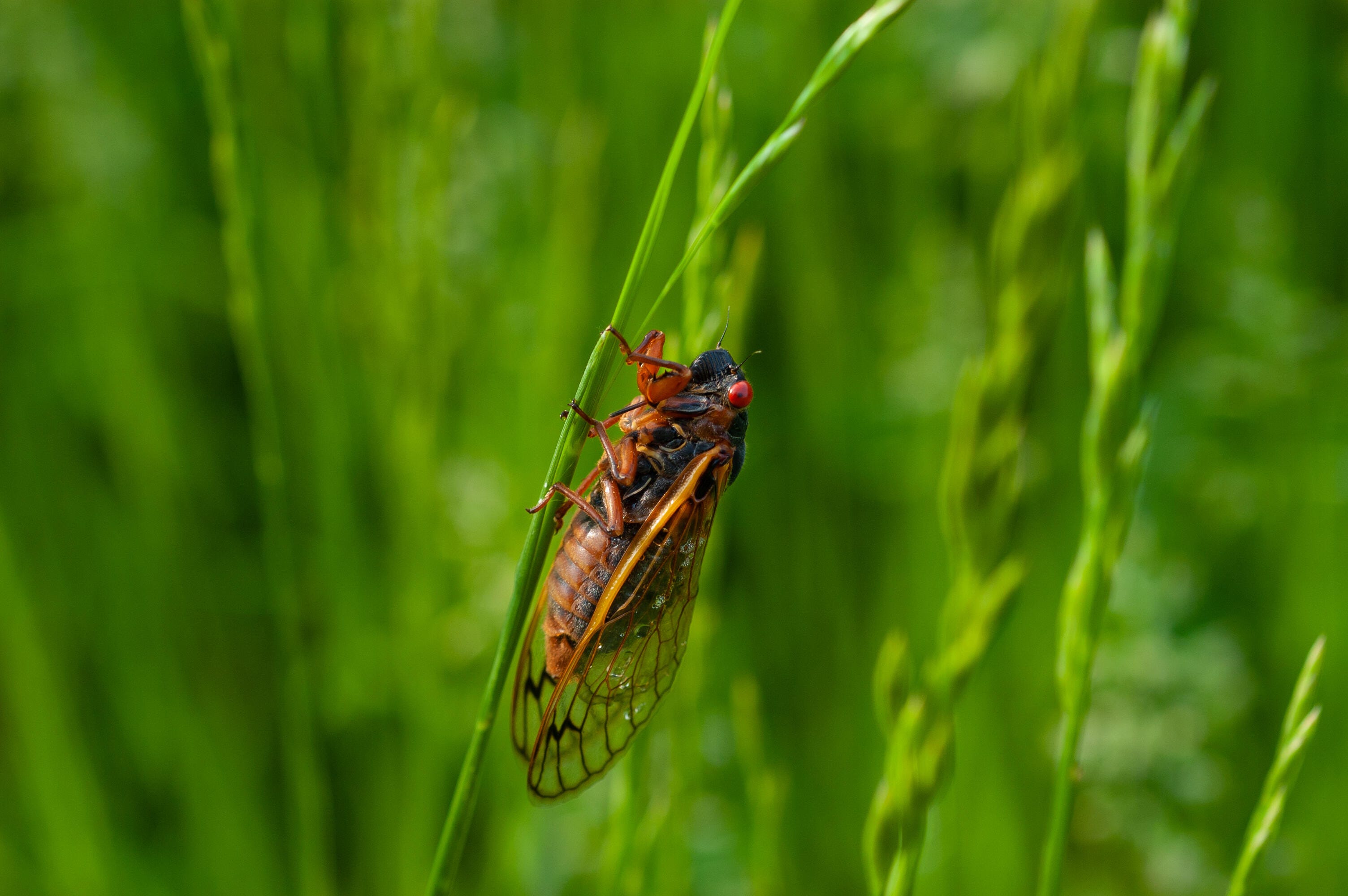[ad_1]

Are cicadas poisonous to pets? We’ll answer that and other questions.
Cyndi Monaghan/Getty Images
I have two excellent dogs. Their combined 100 pounds of muscle and fluff patrol the backyard with chaotic exuberance. It’s their domain. They bark at falling leaves; they chase (but thankfully never catch) squirrels. And they gobble anything they find with delightful, horrible abandon.
Parts of the eastern United States, including where I live in Kentucky, are experiencing Brood X. Brood X is a trillions-strong swarm of cicadas that just came out of a 17-year subterranean slumber. This won’t be my first run-in with Brood X.
In 2004, the last time Brood X imposed its noisy reign of terror, I lived in a small town in Indiana, where I mostly rode my bike to get around. I’d leave home totally cicada-free, dodging them as I rode, watching them fly, landing on trees, grass, the paved path in front of me — everywhere. By the time I reached my destination, I’d inevitably find that at least one or two had hitched a ride with me uptown. They’re harmless, but too big and too loud to ignore, especially when they’re stuck in your hair.
My dogs have never experienced cicadas en masse, but I have some idea how they’ll react: Eat first; ask questions later. My question: Is that safe? Do pet owners need to know anything else about Brood X? Here’s what I found out.
Brood X basics
There are over 3,000 species of cicadas, but just two main types: annual and periodical. Annual cicadas emerge every year; periodical cicadas only emerge every 13 or 17 years.
Brood X is just one of many broods of periodical cicadas — they’ve been snoozing for 17 years, snacking on plant sap, waiting for the right time to come out. That time is now, after a nearly two-decades-long underground transformation from just-hatched cicadas into adults. Periodical cicadas have the lengthiest developmental stage of any insect on the continent, according to the University of Tennessee Department of Entomology and Plant Pathology.
This particular brood isn’t the largest in terms of population (how are trillions of cicadas not the largest brood?) but it is one of the largest in terms of the geographical ground it covers: 15 states and Washington, DC.
Brood X cicada emergence in photos: How it looks as trillions of bugs appear
See all photos
Brood X cicadas have a singular goal: sex. Less than a week after venturing above ground, the male cicadas will begin their mating call. (Y’know, that super-loud droning? A group of male cicadas can get up to 90 decibels or more, about the same as a motorcycle at 25 feet away.) One female can lay hundreds of eggs, then the adult cicadas die. The eggs hatch in about six weeks, and the baby cicadas (nymphs) burrow into the ground to start the same 17-year process all over again.

An adult periodical cicada.
Bill Koplitz/Getty Images
Brood X and your pets
The adult periodical cicadas many of us are seeing measure roughly an inch to an inch and a half long, with black bodies and reddish eyes. They don’t eat much as adults, so there’s little to no effect on crops. They don’t bite or sting, either, but female cicadas make cuts in tree branches and twigs to lay their eggs, which can damage younger trees. Nymphs feeding underground can hurt plant root systems as well.
Because periodical cicadas emerge so rarely and in such large numbers, they don’t have many established predators. That said, many animals, including squirrels, birds — even household pets — take advantage of having them around.
Periodical cicadas aren’t poisonous to pets and other animals, Jonathan Larson, an extension entomologist at the University of Kentucky, tells me via email. “If your pet snatches a cicada while in the yard or on a walk, they will more than likely be fine. However, overindulgence on anything is bad, and this holds true with cicadas and pets.”
Larson says the cicadas can potentially cause an allergic reaction and be a choking hazard to pets. “If your animal feasts on piles of them while they are outside, they can end up with upset stomachs, vomiting or diarrhea.” He also cautions pet owners to consider what might have been sprayed on the ground above the cicadas during their 17-year development.
Read more: Brood X cicadas 2021 emerging across the map: Sights and sounds to expect
The cicadas have arrived
I was fascinated by Brood X in 2004 and I’m fascinated by it now — fascinated, and mildly weirded out by the sheer scale of trillions of insects zooming about, totally unfazed by us. If you have any fruit trees or any other susceptible plants, consider covering them while the adult cicadas are here. Here are other ways to prevent them from damaging your smaller trees.
The good news is that periodical cicadas pose no danger to us and little danger to our pets. They aren’t poisonous and they don’t bite or sting. They’ll just be here for a few weeks to get busy so they can create a new generation of Brood X cicadas for the next emergence in 2038.
Do watch out for your pets, though, to keep them from eating too many cicadas and getting sick or choking, especially if you have speed-eating wild dogs like mine. Otherwise, just sit back and take in the spectacle. They’ll be out of your hair before you know it.
[ad_2]
Source link